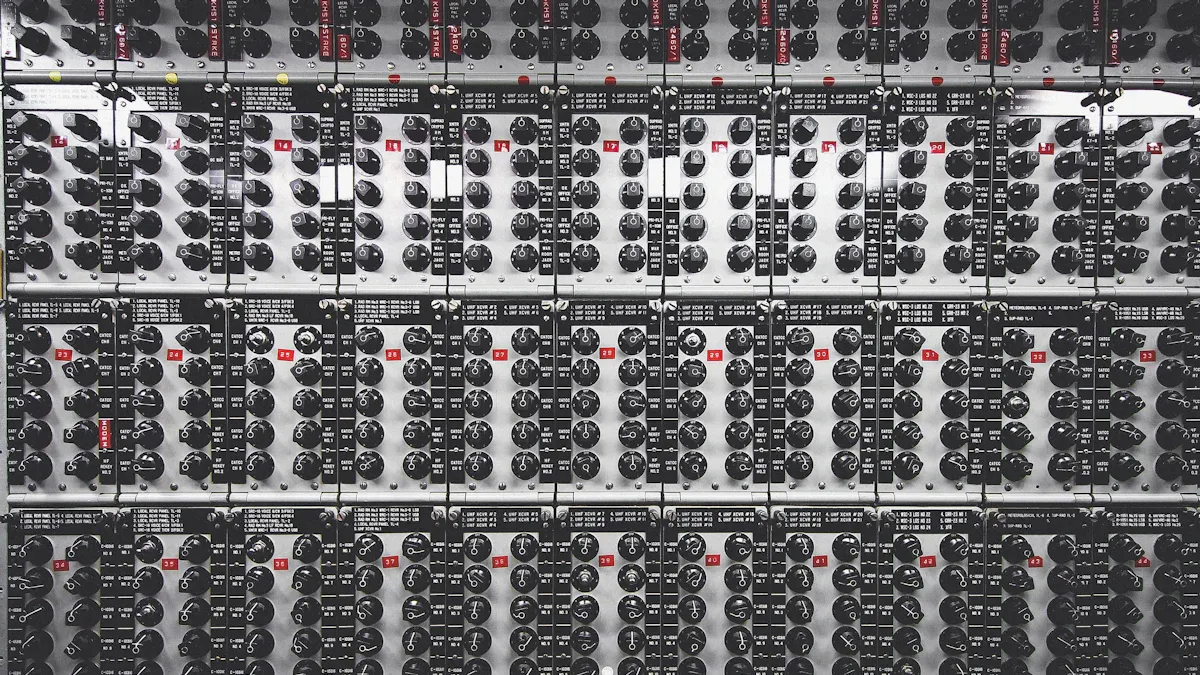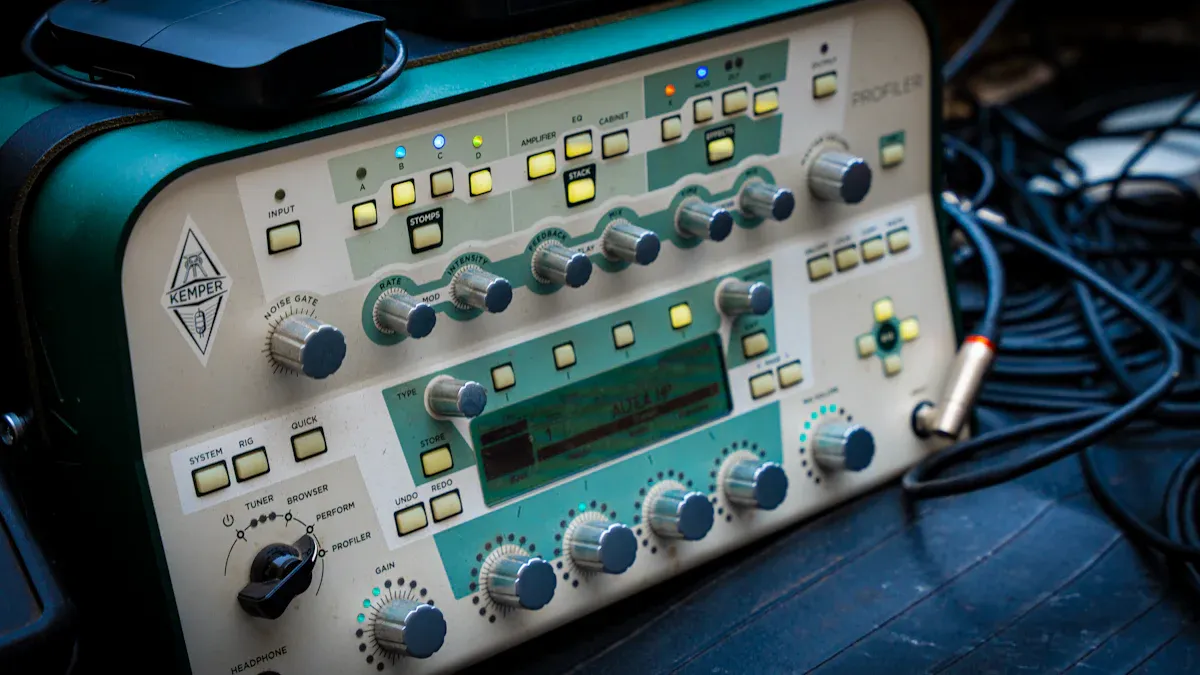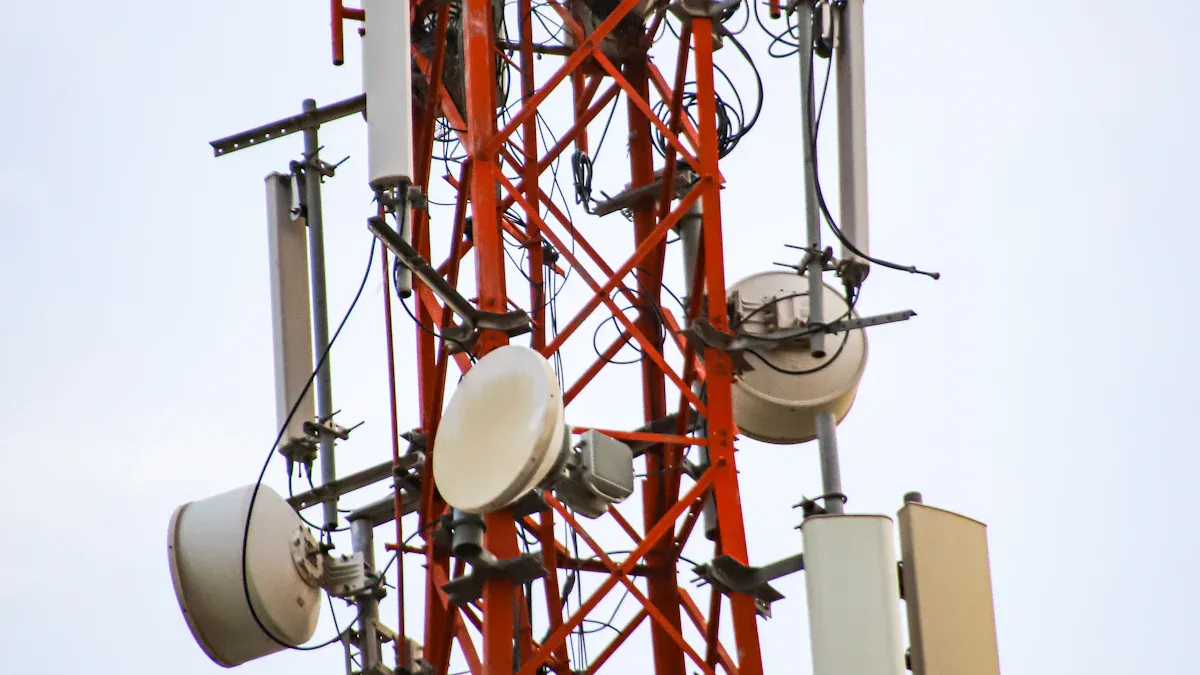What is the TQL9092 and Why It Matters for RF Design

The TQL9092, developed by Qorvo, stands out as a high-linearity, ultra-low noise amplifier designed for signal amplification in wireless communication systems. RF designers value this device for its ability to deliver a noise figure as low as 0.4 dB, far surpassing industry norms. Selecting the right amplifier requires attention to technical details, especially as the market grows rapidly with new demands from 5G, radar, and satellite applications.
Key trends in the amplifier market include:
Rapid expansion in telecom, automotive, and defense sectors.
Advanced semiconductor materials like GaAs and SiGe driving performance.
Key Takeaways
The TQL9092 is a small, powerful amplifier that boosts weak wireless signals with very low noise.
It works well across a wide frequency range and keeps signal strength steady to avoid distortion.
This amplifier uses little power and fits easily into tight spaces on circuit boards.
It performs reliably in tough environments, making it great for defense, mobile networks, and outdoor systems.
Engineers choose the TQL9092 for its strong signal quality, low noise, and easy integration in modern RF designs.
TQL9092 Overview
What It Is
The TQL9092 is a flat-gain, high-linearity, ultra-low noise amplifier from Qorvo. Engineers use this device to boost weak signals in wireless communication systems. Its design focuses on delivering strong performance while keeping noise to a minimum. The amplifier comes in a compact 2 x 2 mm DFN-8-EP surface-mount package. This small size allows for easy integration into dense circuit boards, making it ideal for modern wireless infrastructure.
The TQL9092 supports a wide range of applications. Designers often select it for defense communications, mobile infrastructure, and distributed antenna systems. Its robust construction and advanced features help maintain signal quality in demanding environments.
Note: The small package and high performance make this amplifier a popular choice for space-constrained designs.
Main Features
The TQL9092 offers a set of features that stand out in the RF industry. Its frequency range covers 0.6 GHz to 4.2 GHz, with optimal performance between 1.5 GHz and 4.2 GHz. The amplifier provides a typical gain of 22.6 dB at 2.6 GHz, with gain flatness within ±1 dB over much of its range. This ensures consistent signal amplification across different frequencies.
Below is a summary of its key characteristics:
Characteristic | Description / Value |
|---|---|
Frequency Range | 0.6 GHz to 4.2 GHz (optimized 1.5 to 4.2 GHz) |
Gain | Approximately 22.6 dB at 2.6 GHz |
Gain Flatness | ±1 dB (2 dB peak-to-peak) over 1.5 to 3.6 GHz |
Noise Figure (NF) | Around 0.6 dB at 2.6 GHz |
Linearity (OIP3) | +37 to +39.5 dBm at 65-67 mA bias |
Input Power Ruggedness | 33 dBm continuous wave (CW) |
Power Supply | Single positive supply, 3.3 to 5 V |
Current Consumption | Approximately 65-67 mA |
Package Type | 2 x 2 mm DFN surface-mount package |
Special Features | Integrated on-chip matching, shutdown capability, 1.8V TTL compatible shutdown control, unconditionally stable, high input power ruggedness, Class 1B HBM ESD rating |
Applications | Defense communications, FDD/TDD, mobile infrastructure, repeaters/DAS |
The amplifier also features a low noise figure, high output linearity, and strong input power handling. Its supply voltage ranges from 3.3 V to 5 V, and it operates reliably from -40°C to +105°C. The device meets RoHS compliance and supports an active lifecycle, making it suitable for long-term projects.
Specs

Frequency Range
The TQL9092 covers a wide frequency range, making it suitable for many RF applications. It operates from 600 MHz up to 4.2 GHz. This broad range allows engineers to use the amplifier in both lower and higher frequency systems. The table below compares the TQL9092 with a similar amplifier, the TQL9093:
Amplifier | Frequency Range | Gain (dB) | Noise Figure (dB) |
|---|---|---|---|
TQL9092 | 600 MHz–4.2 GHz | 22.6 | 0.53 |
TQL9093 | 600 MHz–4.2 GHz | 19.9 | 0.67 |
The TQL9092 stands out by offering higher gain and a lower noise figure than the TQL9093, even though both support the same frequency band. This advantage makes the TQL9092 a better choice for sensitive RF designs.
Gain and Flatness
Engineers value consistent gain across a wide frequency range. The TQL9092 delivers a typical gain of 22.6 dB. It maintains a gain flatness of about 2 dB peak-to-peak between 1.5 and 3.6 GHz. This means the amplifier boosts signals evenly, which helps prevent distortion and ensures reliable performance. The stable gain profile supports applications that require uniform amplification, such as wireless base stations and distributed antenna systems.
Noise Figure
A low noise figure is critical in RF design. The TQL9092 achieves a noise figure of around 0.6 dB at 2.6 GHz. This low value means the amplifier adds very little noise to the signal. As a result, systems using the TQL9092 can detect weaker signals and maintain better signal quality. High linearity and low noise together help reduce signal distortion and improve overall system performance.
Tip: Choosing an amplifier with a low noise figure and high linearity, like the TQL9092, can greatly improve the sensitivity and clarity of RF systems.
Power and Package
The TQL9092 operates with a single positive supply voltage between 3.3 V and 5 V. It draws about 65 to 67 mA of current during normal operation. The device comes in a compact 2 x 2 mm DFN-8-EP surface-mount package. This small footprint allows designers to save space on crowded circuit boards. The package also supports easy integration into automated assembly lines, which is important for large-scale production.
The combination of wide frequency coverage, high gain, flat response, low noise, and efficient power use makes the TQL9092 a strong candidate for demanding RF applications.
TQL9092 in RF Design

Performance Benefits
RF designers often look for amplifiers that can boost signals without adding unwanted noise or distortion. The TQL9092 delivers on these needs with its ultra-low noise figure and high gain. These features help maintain the quality of weak signals, making them easier to process in receiver chains. The amplifier’s flat gain response ensures that signals across a wide frequency range receive consistent amplification. This consistency reduces the risk of signal distortion, which is important for reliable communication.
The following table highlights how the TQL9092 improves signal-to-noise ratio (SNR) in RF systems:
Parameter | TQL9092 Value | Impact on SNR Improvement |
|---|---|---|
Noise Figure | Ultra-low noise figure reduces noise, improving SNR | |
Gain | 22.6 dB | High gain amplifies signal, enhancing SNR in receiver chains |
A low noise figure means the amplifier adds very little noise to the original signal. High gain ensures that even weak signals become strong enough for further processing. Together, these features help systems detect and use signals that might otherwise be lost. The TQL9092’s flat-gain and high-linearity design also reduce distortion, which keeps the signal clear and accurate.
Note: Consistent amplification and low noise are key for high-quality RF communication. The TQL9092 helps achieve both, making it a strong choice for demanding designs.
Use Cases
Engineers use the TQL9092 in many commercial and industrial RF systems. Its robust design and reliable performance make it suitable for harsh environments and critical applications. Some of the most common use cases include:
Outdoor 4G/LTE micro base-stations for industrial networks
Signal extension amplifiers in distributed antenna systems
Wireless infrastructure for mobile and defense communications
Systems that require operation in extreme temperatures and weather conditions
For example, the Ukama project uses this amplifier in its Tower Node and Amplifier Unit. These devices support up to 128 active connections and operate in outdoor industrial settings. They feature wide temperature ratings and weatherproof enclosures, making them ideal for remote or rugged locations. The TQL9092’s low power consumption also supports solar-powered deployments, which are common in modern industrial networks.
RF designers choose this amplifier when they need reliable signal amplification, low noise, and strong performance in challenging environments. Its ability to maintain signal quality helps ensure stable and clear communication, even in the most demanding scenarios.
Comparison
Competing LNAs
Engineers often compare low noise amplifiers (LNAs) by looking at three main factors: gain flatness, noise figure, and linearity. Many popular LNAs, such as the Mini-Circuits PMA2-33LN+ and Analog Devices HMC8410, serve similar markets. These amplifiers offer good performance, but each has its own strengths and weaknesses.
LNA Model | Frequency Range | Gain (dB) | Noise Figure (dB) | OIP3 (dBm) | Gain Flatness (dB) |
|---|---|---|---|---|---|
Mini-Circuits PMA2-33LN+ | 50–3000 MHz | 21 | 0.5 | 36 | ±1.5 |
Analog Devices HMC8410 | 0.01–8 GHz | 15 | 1.2 | 35 | ±2.0 |
Qorvo TQL9092 | 0.6–4.2 GHz | 22.6 | 0.6 | 39.5 | ±1.0 |
Note: Gain flatness shows how much the gain changes across the frequency range. A lower value means more consistent amplification.
Some amplifiers provide lower noise figures, but they may not keep gain as flat across wide frequency bands. Others offer high linearity but sacrifice noise performance. Designers must balance these factors when choosing an LNA.
Unique Value
The TQL9092 stands out because it combines high gain, excellent gain flatness, and strong linearity in a small package. Its gain stays almost the same across a wide frequency range. This helps keep signals clear and strong. The amplifier also handles high input power and works well in tough environments.
Key advantages include:
Consistent gain for reliable signal quality
Ultra-low noise for better sensitivity
High linearity for minimal distortion
Compact size for easy integration
Engineers who need stable, low-noise amplification in space-limited designs often choose this device. Its balanced performance makes it a top pick for modern wireless systems.
Engineers benefit from amplifiers that deliver high gain, low noise, and strong linearity. This device provides precise signal amplification across a wide frequency range. Its flat gain response and high input power ruggedness help maintain signal integrity in complex systems. The small package and low current use support compact, efficient designs. These features make it a reliable choice for defense, mobile infrastructure, and distributed antenna systems. Designers seeking robust performance and reliability in demanding RF environments often select this amplifier.
FAQ
What makes the TQL9092 different from other low noise amplifiers?
The TQL9092 offers high gain, flat response, and ultra-low noise in a compact package. Its strong linearity and rugged input power handling set it apart from many competing amplifiers.
Can engineers use the TQL9092 in outdoor or harsh environments?
Yes. The TQL9092 operates from -40°C to +105°C. Its robust design supports reliable performance in extreme temperatures and weather conditions.
Does the TQL9092 require external matching components?
No. The TQL9092 features integrated on-chip matching. This design simplifies board layout and reduces the need for extra components.
What supply voltage does the TQL9092 need?
The TQL9092 works with a single positive supply voltage between 3.3 V and 5 V. This flexibility helps engineers use it in many different systems.
Is the TQL9092 suitable for high-volume production?
Yes. The small 2 x 2 mm DFN package supports automated assembly. Its RoHS compliance and active lifecycle make it ideal for large-scale manufacturing.
See Also
Fundamentals And Uses Of Analog Integrated Circuit Design
Exploring The Function And Purpose Of IC Demodulators
Leading RF Parts Providers For 5G Networks In 2025
How Current-Loop Transmitter Chips Operate And Their Uses
New Developments In Radar Signal Processing Chip Innovations
